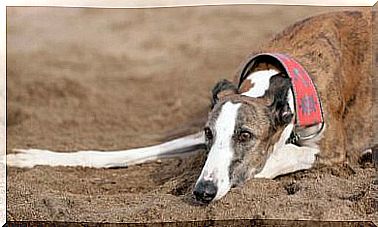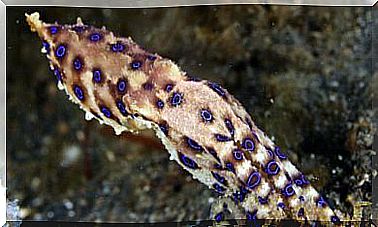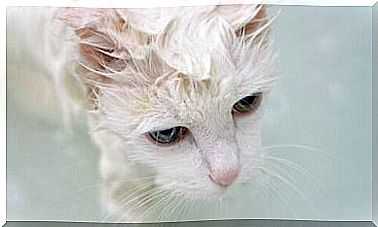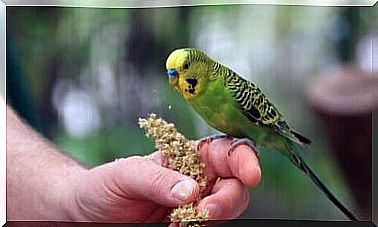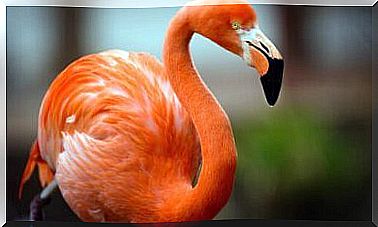What Do Scorpions Eat And How Do They Hunt?
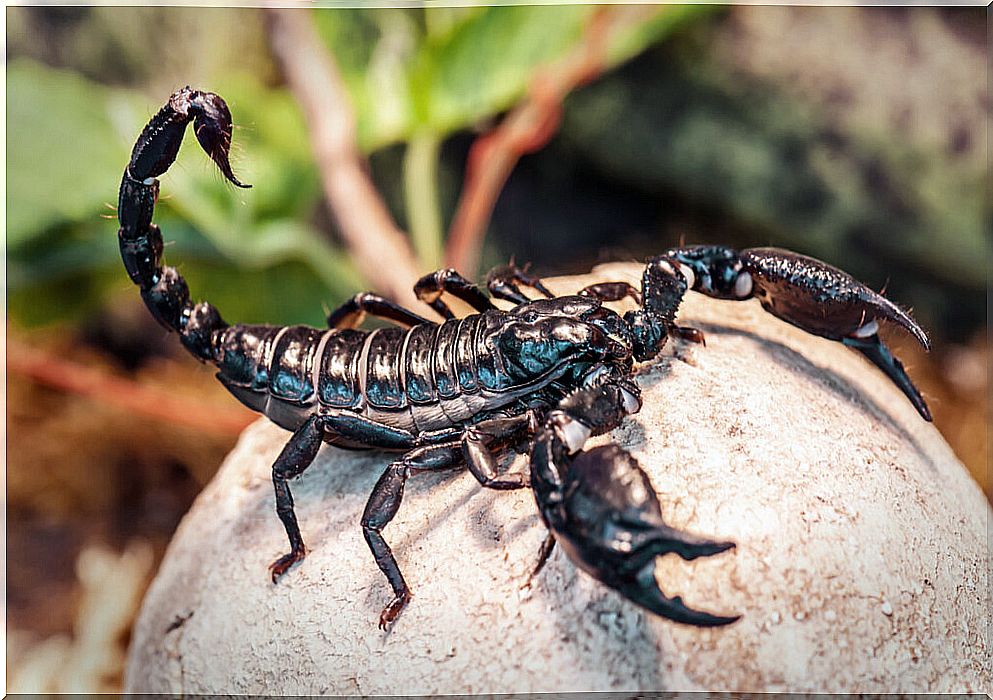
Scorpions are predatory arachnids known for their poisonous stings . All have 8 legs, pedipalps modified with tweezers (chela) and a tail that ends in a sting, which produces more or less powerful toxins. Beyond the general data, knowing what scorpions eat helps their conservation and avoids fears in human environments.
These arachnids have an undeservedly bad reputation, as fewer than 50 species of the 2,500 described so far have venom lethal enough to end the life of a human. If you want to know more about the eating habits of the scorpion, read on.
General information on scorpions
First, we want to emphasize that we will use the term “scorpion” to designate all the arachnids of the order of Scorpions , which includes about 2,500 species divided into 22 recognized families. The evolution of this group dates back to 435 million years ago and, in all this time, the species have spread all over the world, with the exception of Antarctica.
All scorpions have a body divided into 3 segments: cephalothorax (head), mesosome (abdomen) and metasome (tail). All have an exoskeleton, eyes, chelicerae, chelated pedipalps, 4 pairs of legs and a tail that ends in a sting. As you can see, their morphological diversity is very low.
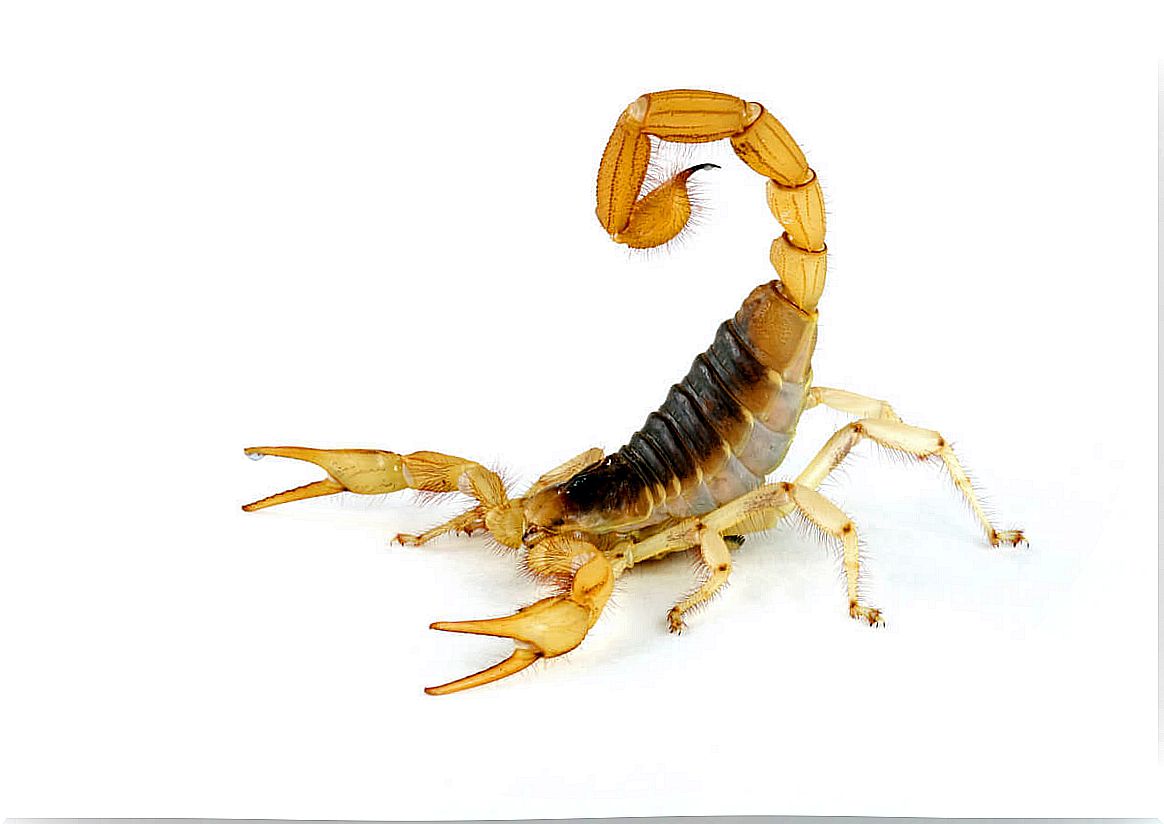
What do scorpions eat?
All scorpions are carnivores, that is , they feed on the organic matter provided by their prey. Most of them feed on grasshoppers, crickets, termites, beetles and wasps. However, some species are also capable of killing small vertebrates, such as rodents, amphibians, or reptiles.
Like many other arachnids, scorpions digest food externally. With the help of their chelicerae, they break down food into small parts, which are stored in an oral cavity, between the chelicerae area and the shell. Gastric juices are secreted in this chamber, so that the scorpion can ingest its food in the form of liquids.
What do scorpions eat: hunting
At this point, it should be noted that these arthropods are ectotherms. This means that they do not generate their own heat with metabolic reactions and therefore depend on the environment for thermoregulation. As studies indicate, ectothermic cells have fewer mitochondria – the energy-generating organelles par excellence – than those of endotherms.
For all of these reasons, scorpions have much lower metabolic rates than a mouse or bird, for example. Their hunting strategy is wait-and-see, that is, they wait for an insect to pass through their burrow and skillfully grab it with their tweezers, then inoculate the venom. You will never see a scorpion chasing its prey, as it literally does not generate enough energy to do so.
Depending on the species of scorpion, a specimen can kill smaller prey only with the strength of its pincers. If the victim resists or poses a threat, the scorpion resorts to sting with venom. Toxin production is very energy-intensive, so the sting only occurs when absolutely necessary.
Under this same rule, scorpions with larger claws are believed to have milder venom. On the other hand, the greater the prominence of the tail and the smaller the claws, the more lethal the toxins will be.
Captive care of scorpions
You must be very careful when acquiring scorpions as pets, as some species are lethal and therefore their possession without permission is illegal. Hosting a potentially dangerous animal (PP) in the home without the proper facilities is considered a crime.
The most commercialized scorpions are those of the genus Heterometrus , large, black in color and with very prominent claws. They do not pose a danger to humans, so no special permits are required for their possession. These animals possess a venom of negligible clinical significance and rarely use the stinger.
To keep a specimen of this genus, a terrarium measuring 30x20x20 centimeters in length, width and height is sufficient. Universal substrate or coir are perfect for installation as a floor and at least 5 fingers of substrate should always be laid. Scorpions like to bury themselves and stay hidden for most of the day.
As for the environmental parameters, it is good to keep the temperature between 20 and 30 degrees and the relative humidity at 80%. To achieve this, it is sufficient to spray water on the installation about 2 or 3 times a week. Furthermore, it is usually sufficient to give an average live prey a week – cricket or cockroach – to an adult specimen. Scorpions don’t eat much.
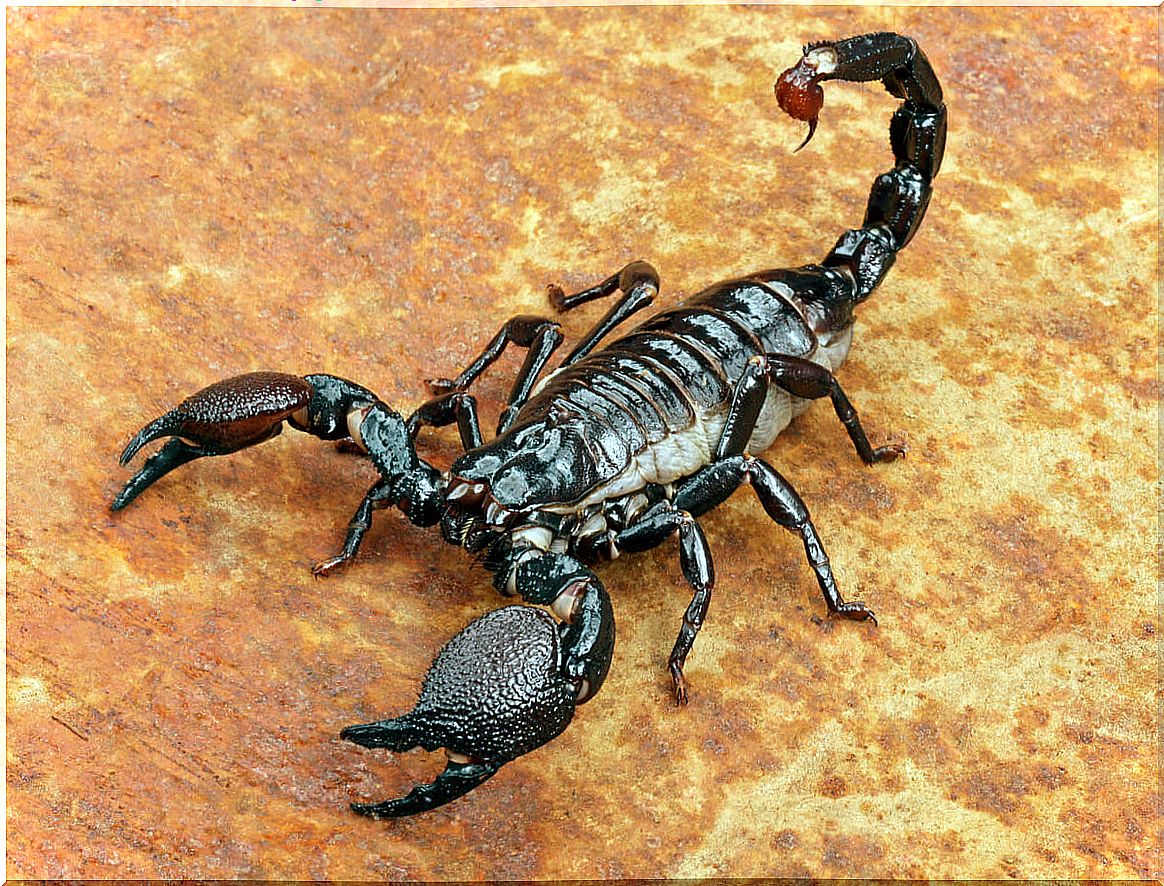
Finally, it should be noted that dangerous species are also sold without a permit in many regions. Be especially careful with scorpions of the genus Tizio and Androctonus . Before buying any animal species, make sure of the professionalism of the seller and its characteristics.

